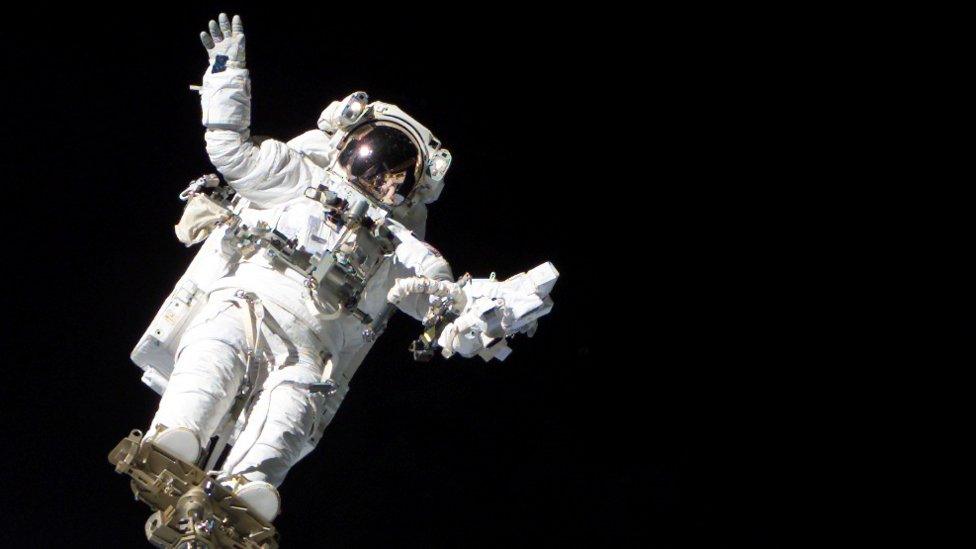'It was magical' - meet the first disabled crew to fly in zero-gravity
- Published
Listen to the podcast: Meet the first disabled crew to fly in zero-gravity
Becoming an astronaut is out of reach for most people. But could the tough selection process be doing more harm than good? New space firm, Mission Astro Access, wants to challenge the perception that space travel is only for those who meet specific physical criteria, and has sent its first disabled crew on a zero-gravity flight.
"It was magical," says Sina Bahram of his first experience of weightlessness. "I've wanted to do this since I was four years old, but the underlying assumption was 'that's totally impossible'."
The blind computer scientist, from North Carolina, was one of 12 disabled ambassadors selected by Mission Astro Access in America to experience a zero-gravity flight while conducting experiments looking at inclusive space travel.
In the future, this could mean incorporating tactile pathways in and around shuttles or utilising sound or vibrations to convey information.
"It can benefit the entire aerospace community," Sina says, explaining that when adjustments are made for disabled people it makes everyone's lives easier. The curb-cut to lower pavements, for instance, was created for wheelchair-users, but is welcomed by parents with prams.
Nasa astronaut Chris Hadfield might be keen to hear that. He made headlines in 2001 when cleaning fluid leaked inside his visor and irritated his eyes so he was unable to see mid-spacewalk.
Had tactile and audio information been available to him, not only would it have benefitted a blind crew but Hadfield might have felt safer too.
In October, the Mission Astro Access crew travelled to Long Beach, California and boarded a Boeing 727 for a parabolic flight. Sometimes referred to as the Vomit Comet, the plane flies in large arcs. As the plane tips over the arc it goes into free-fall creating weightlessness for about 20 seconds.
"The moment it actually sunk in was when they closed the cargo door," says ambassador Mary Cooper who has always dreamed of space travel but thought it impossible.
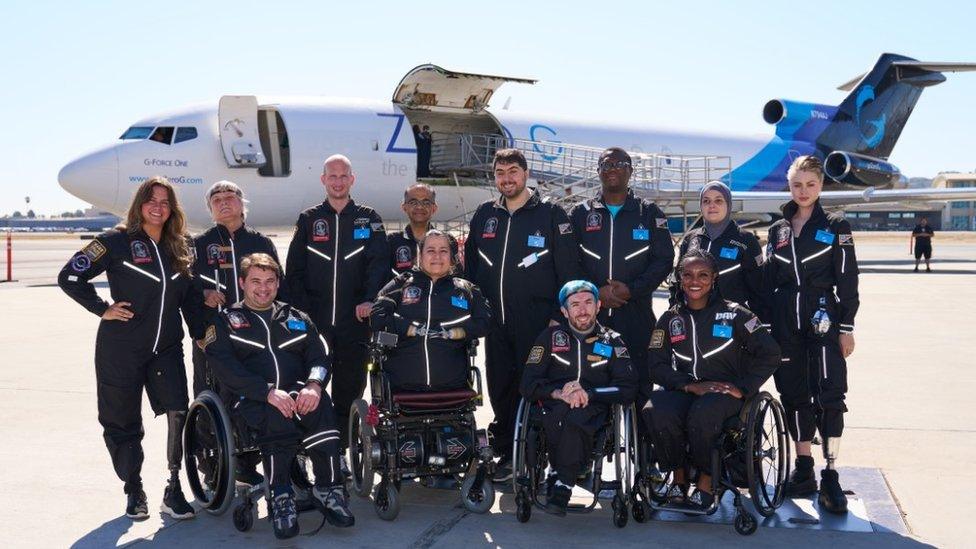
The aerospace engineering and computer science student at Stanford University was born with fibular hemimelia, where part or all of the leg bone is missing. Mary had her left leg amputated below the knee as a baby and uses a prosthetic. "It's one of my favourite things about me now," she says.
As the plane went over the top of the arc and gravity disappeared the crew felt weightless for the first time - an extraordinary sensation.
"It's not that you're floating up, it's that you're no longer getting pulled down," Sina says excitedly. "You're sitting on the ground, you push off so much as with one finger and you're floating."
Sina had wondered what floating blind would be like when his constant point of reference - gravity - disappeared.
"I was expecting disorientation," he says, "[but] once I started getting used to zero-g I immediately found it comfortable and easy for me to push off with less force and to use a little more finesse."
Each crew member worked with MIT on specific experiments in-line with their disability to see how the industry could move forward, inclusively.
Sina tried using audio beacons to navigate by sound.
"Guess what? We couldn't hear them," he says, saying it is far louder than a commercial flight. "That's a learning."
But something unexpected happened.
When the command "feet down" was yelled - signalling the end of the parabola - "many of us in the blind and low vision crew were able to find our mats," he says.
"That was just really a testament, both to our internal working memory and all the solutions we've had to come up with on earth."
The failure of the audio beacons has opened up other conversations.
Could bone-conducting headphones be used? Or maybe vibrotactile feedback - the sensation of vibration - by having a device placed on someone's skin where the noise could be felt?
Mary's experiment gave her permission to cartwheel.
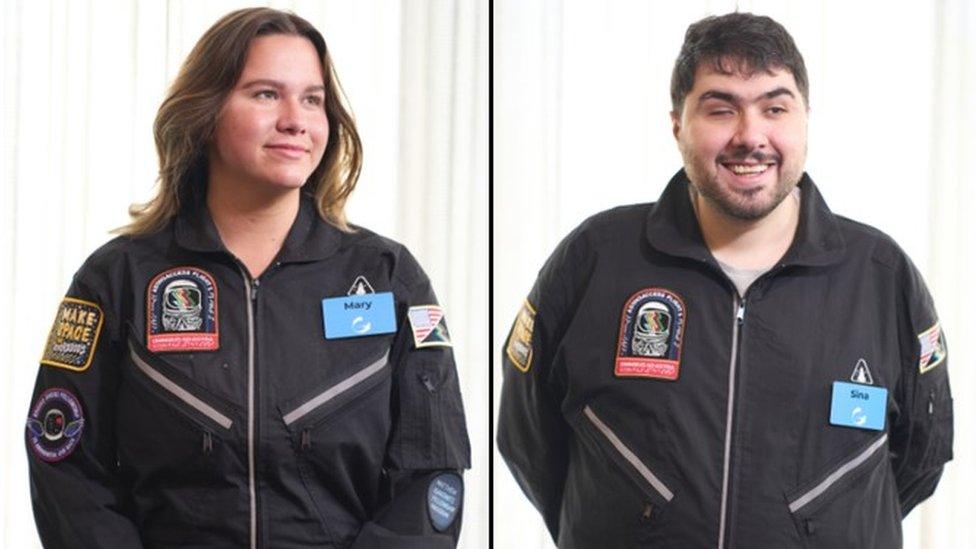
She wanted to prove she could station keep - manoeuvre around the cabin safely - with and without her prosthetic leg.
"I was able to let my leg go, just let it fly. I had this moment of flipping around, doing cartwheels. And that was such an amazing experience," she says, proving prosthetic limbs don't hold anyone back.
While Mary and Sina are part of the first disabled crew to go on a parabolic flight, they are not the first individuals.
In 2007 Stephen Hawking described the experience as "true freedom" and this September Hayley Arceneaux was one of four civilian astronauts to fly aboard SpaceX's Inspiration4. She has a titanium thigh bone having survived childhood bone cancer.
Another astronaut, Rich Clifford, was diagnosed with Parkinson's shortly before his third space flight - but it was not widely disclosed.
Mary says: "Nasa, and from a government standpoint, have never picked anyone with a disability. They always have had these very strict standards."
"And these standards aren't safe," Sina adds. "Nasa is doing a disservice to humanity and also to astronauts themselves by not considering inclusion upfront. When you get a group of people with diverse abilities together the sum is greater than the parts."
It is something Nasa utilised in the 1950s, when it recruited 11 men from Washington's Gallaudet University - for the deaf and hard of hearing.
Most had acquired their deafness through meningitis, which damaged the vestibular system of their inner ear making them "immune" to motion sickness.
They took part in a variety of experiments to report their physiological and psychological experiences of movement including weightlessness.
One experiment took them to the choppy Nova Scotian seas. While the scientists became violently ill, the Gallaudet Eleven played cards.
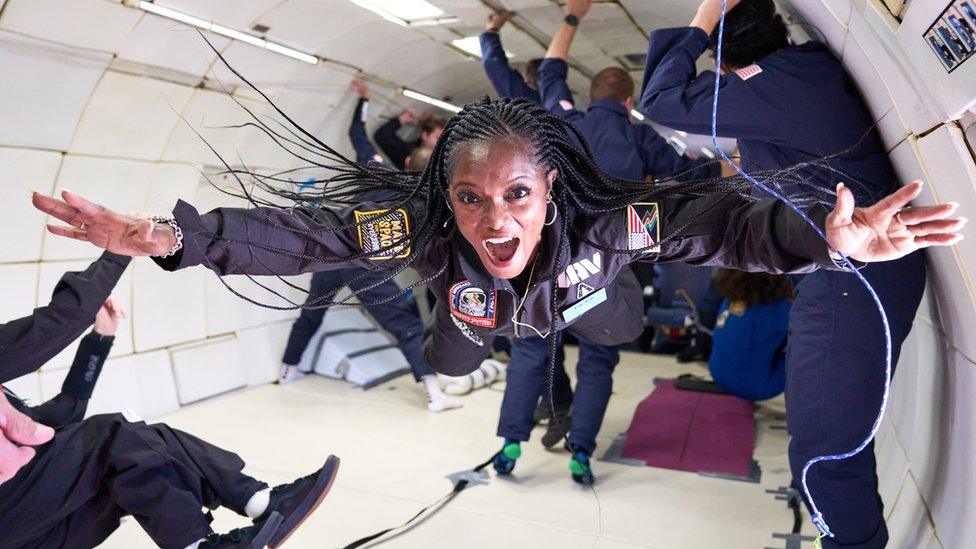
Sina believes "ableism" is what is holding the industry back.
"There's this built-in belief that persons with disabilities are somehow less than and therefore all of the other considerations aren't brought to the table," he says, saying that needs to stop.
Mary says there are simple ways to increase inclusion. Astronauts speak several languages, so why not make American Sign Language (ASL) one of those?
Some of the crew signed during the mission, but interpreting the words was difficult when people were floating upside down.
Solutions are already being bandied about - perhaps a drone could detect signs and display them the right way up for the receiver?
It's food for thought.
Next time, Sina personally wants to explore "the sonification of a gyroscope," where sound and vibration could give him a sense of movement in a particular direction.
He says flight suits could have these features built-in, benefiting everyone, not just blind astronauts.
"Mary will be looking at something and doesn't need to glance up to know that she's actually experiencing a little bit of spin, because her left hip is vibrating.
"We need to get away from thinking of this as that which is done in excess. These are necessary considerations that we simply haven't been making yet."
Mission Astro Access isn't alone in this space race. The European Space Agency called for six para-astronauts earlier this year and disability advocate Eddie Ndopu has signed several NDA's about space travel.
Having returned to earth, Mission Astro Access' 12 ambassadors will now also "rethink life on earth" and encourage greater inclusivity within the science, technology, engineering, and mathematics (STEM) sectors.
"The thing that resonates with me the most is that we really don't need many accommodations," Mary says, whose mind often drifts back to October.
"Every single night I lay in bed and I just try and remember that feeling of complete weightlessness. It's a feeling I know I'll be chasing for a long time."

Related topics
- Published19 September 2021
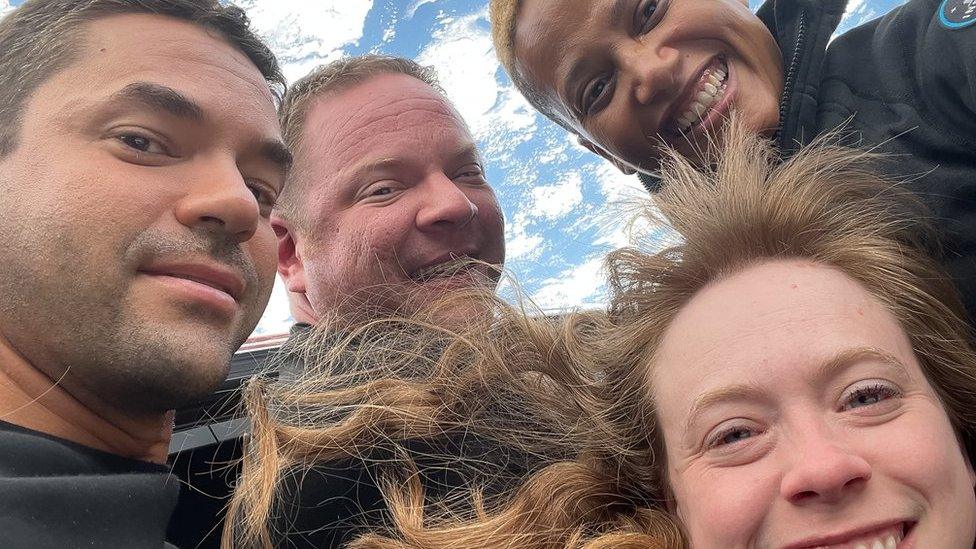
- Published17 March 2018
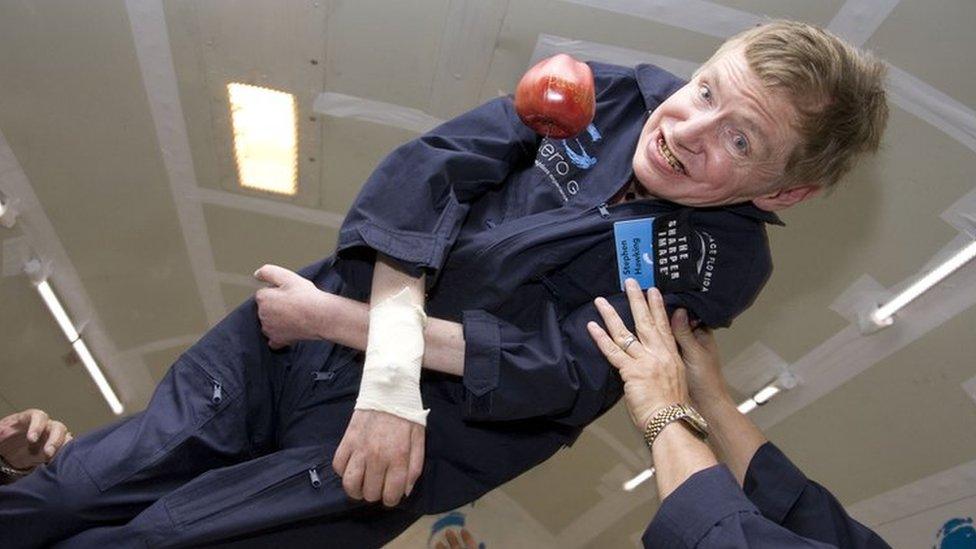
- Published22 December 2015
